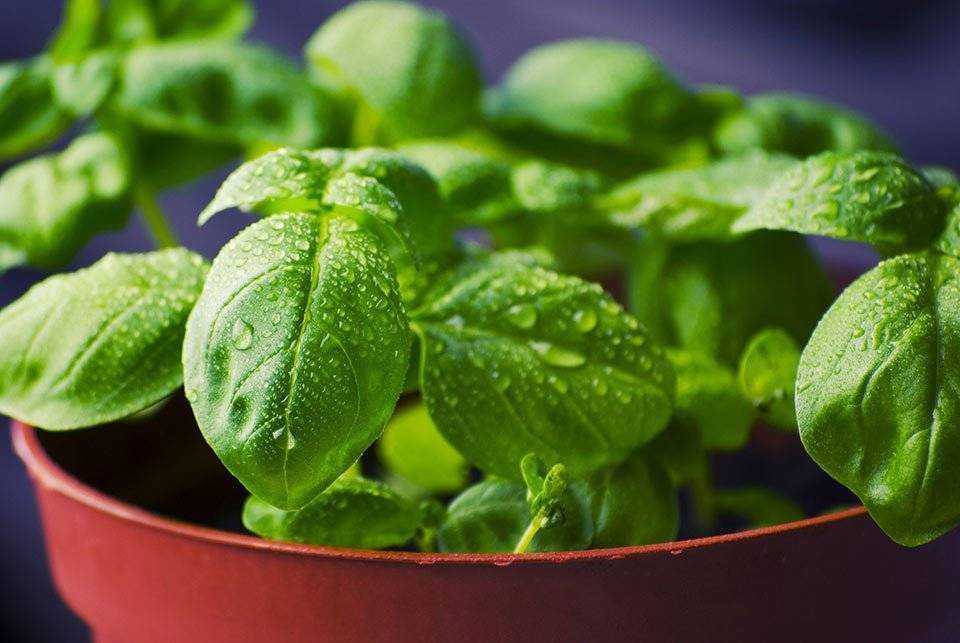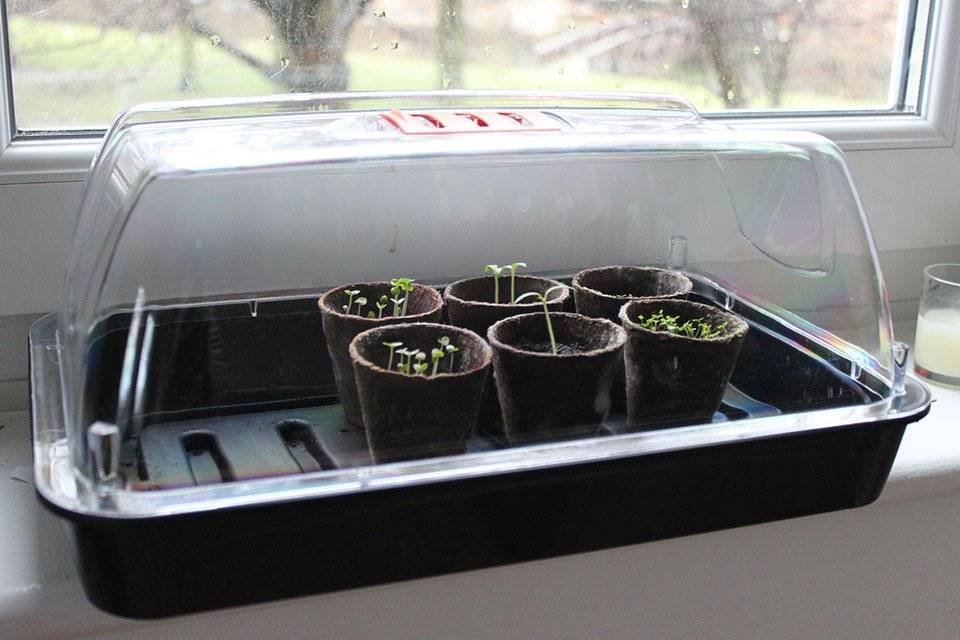Beautiful Plants For Your Interior
How to Grow Basil: A Comprehensive Guide for Beginners

If you are looking to add some flavour to your dishes, then growing basil is an excellent idea. Basil is a versatile herb that can be used in many dishes, including pasta, salads, and pizzas.
In this post, we will provide a comprehensive guide on how to grow basil, from selecting the right variety to harvesting and using it in your cooking.
Basil is a popular herb that has been used for centuries in many different cultures for its culinary and medicinal properties. Growing basil is not only a great way to enhance the flavour of your meals, but it can also be beneficial for your health.
Basil is a rich source of antioxidants and anti-inflammatory compounds that can help reduce inflammation and protect against chronic diseases such as cancer and heart disease, but there is no good scientific evidence to support these uses. It also contains essential vitamins and minerals such as vitamin K, vitamin C, vitamin A, calcium, Omega-3 fatty acids, and iron.
Selecting The Right Basil Variety
Basil comes in many different varieties, each with its unique flavour and appearance. When selecting the right basil variety, consider your intended use and growing conditions. Some popular basil varieties include:
- Sweet Basil (Ocimum basilcum): The most common variety with a mild, sweet flavour.
- Thai Basil (Ocimum basilicum var: thyrsiflora): has a licorice flavour and is commonly used in Asian dishes.
- Lemon Basil (Ocimum citriodorum): This has a citrusy flavour and is perfect for use in salads and seafood dishes.
- Cinnamon Basil (Ocimum basilcum var: cinnamon): This variety comes from Mexico. It has a mild flavour of cinnamon.
- Purple Basil (Ocimum basilcum L): This has a unique colour and a slightly spicy flavour.

How to Grow Basil: Choosing The Right Location, You Can Place Your Pots in a ‘Propagator’ or Cover them With A Bag to Germinate
Choosing The Right Location
Basil grows best in warm, sunny locations. Choose a spot in your garden that receives at least 6 hours of direct sunlight per day.
Basil prefers warm temperatures and high humidity. The ideal temperature for basil is between 60-80F (15-26 C) To increase humidity, you can place a tray of water near the plant or use an electric propagator.
Preparing The Soil
Before planting basil seeds, it is essential to prepare the soil properly. Start by removing any weeds and debris from the planting area if planting outside. Add compost or aged manure to the soil to improve drainage and add nutrients.
Basil also prefers well-drained soil with a pH between 6.0 and 7.5. Avoid planting basil in areas with heavy foot traffic, as this can damage the delicate leaves.
Planting The Basil Seeds
Basil seeds can be planted directly in the soil or started indoors and transplanted outside once the weather warms up. Plant basil seeds about ¼ in (6mm) deep and 10-12 in (27-30cm) apart. Water the soil lightly after planting to keep it moist.
Watering And Fertilising
Basil requires regular watering to keep the soil moist but not waterlogged. Avoid getting water on the leaves, as this can lead to disease. Fertilise basil every 4-6 weeks with a balanced fertiliser to promote healthy growth.
Pruning And Maintenance
To encourage bushy growth and prevent the plant from going to seed too quickly, pinch off the top leaves once the plant has reached 6in (15cm) in height. Regularly remove any yellow or damaged leaves to promote healthy growth.
Harvesting Basil
Basil can be harvested once the plant has reached about 6-8 in (12cm-20cm) in height. Pinch off individual leaves or cut/pinch off entire stems, but be sure not to remove more than ⅓ of the plant at a time. Regular harvesting will encourage new growth and help to prevent the plant from going to seed too quickly.
In the UK the growing season for Basil is in the summer months, however as Autumn arrives, try taking a few plants inside and put them on a sunny warm window sill and continue to have fresh Basil throughout the winter.

How to Grow Basil: When Harvesting, You Should Pinch Off The ‘Stem’ Right Above Where a ‘Pair’ of Leaves Are Growing
Using Basil in Cooking
Basil can be used in many different dishes, including pasta sauces, soups, salads, pesto, and sandwiches. It is best used fresh, as the flavour can diminish when cooked. Add fresh basil to your dishes just before serving to maximize its flavour and aroma.
One popular recipe that uses basil is Caprese salad. Caprese salad is a simple, yet delicious, salad made with fresh mozzarella cheese, ripe tomatoes, and fresh basil leaves.
To make Caprese salad, start by slicing fresh mozzarella cheese and ripe tomatoes into equal-sized slices. Arrange the slices on a plate, alternating between the cheese and the tomato. Then, top the salad with fresh basil leaves and drizzle with high-quality extra-virgin olive oil. Finally, season with salt and black pepper to taste.
Caprese salad is a popular dish in Italy and is often served as a starter or appetiser. It is a light and refreshing dish that is perfect for a summer day or as a side dish to a main course. The combination of fresh mozzarella, ripe tomatoes, and aromatic basil creates a perfect balance of flavours that is both simple and elegant.
Overall, Caprese salad is just one example of the many dishes that can be made with basil. Whether you are cooking Italian cuisine or experimenting with new flavours, basil is an herb that can add depth and complexity to your dishes.
How to Grow Basil: How to Make Fresh Basil Pesto Like an Italian
Storing Basil
Basil can be stored for several days in the refrigerator by wrapping the leaves in a damp paper towel and placing them in a plastic bag. Alternatively, basil can be frozen in ice cube trays with a small amount of water or olive oil to preserve its flavour.

How to Grow Basil: ‘Puree’ Fresh Basil, Place in an Ice Cube Tray in The Freezer
Common Basil Problems and Solutions
Basil can be susceptible to several problems, including pests and diseases. Some common problems and solutions include:
- Aphids: These are small, pear-shaped insects that can be removed by spraying the plant with a strong stream of water or using insecticidal soap.
- Fusarium Wilt: This is a soil-borne fungal disease that causes the leaves to yellow and wilt. Remove infected plants and avoid planting basil in the same area for several years.
- Downy Mildew: This is a fungal disease that causes greyish-white spots on the leaves. Remove infected plants and avoid overhead watering.
- Slugs: These can be deterred by placing copper tape around the base of the plant or using a slug bait.
FAQ’s
Can I Grow Basil Indoors?
Yes, basil can be grown indoors in a sunny window or under grow lights.
How Often Should I Fertilise Basil?
Basil should be fertilised every 4-6 weeks with a balanced fertiliser.
How Much Sun Does Basil Need?
Basil needs at least 6 hours of direct sunlight per day.
Conclusion
Growing basil is a rewarding experience that can enhance the flavour of your meals while also providing health benefits. By selecting the right variety, choosing the right location, preparing the soil properly, and following proper maintenance practices, you can enjoy a bountiful harvest of fresh basil throughout the growing season. With a little effort and patience, you can enjoy the fresh, aromatic taste of basil in your favourite dishes.
